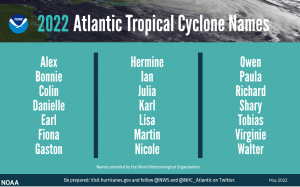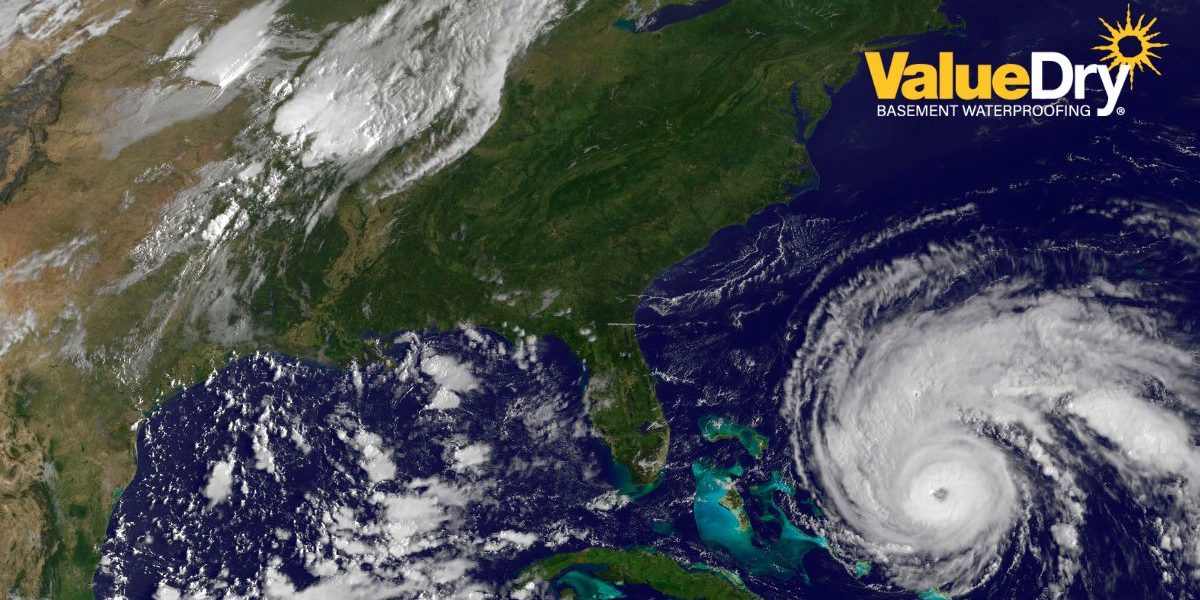Is Your Basement Prepared for Hurricane Season?
- July 14, 2022
- No Comments
The 2022 Atlantic Hurricane Season started on June 1, and doesn’t end until November 30. For the Mid-Atlantic region, the most active months are August and September. According to the National Oceanic and Atmospheric Administration (NOAA), we can expect above-average hurricane activity this year. That will make it the seventh consecutive above-average season.

We don’t always see the high winds associated with hurricanes, as they usually get downgraded to tropical storms before they reach the region. But we can get enormous amounts of rain. And if you have a basement, that can mean bad news. But there are steps you can take to help prevent a flooded basement.
Things You Can Do to Help Keep Water Away from Your Foundation
There are several things you can do to help divert water away from your foundation. These include:
- Cleaning gutters so they don’t overflow
- Using downspout extenders to divert water at least 6’ away from your foundation
- Adding fill dirt or regrading so the ground slopes AWAY from your foundation
- Clearing window wells of debris and caulking leaks
- Using window well covers
If you’ve already taken all of these measures and you are noticing signs of a web basement, it may be time to call in the professionals.
Signs You May Need Basement Waterproofing
Some signs you need basement waterproofing are more obvious than others. If you have a finished basement in a home with a previous owner, it’s hard to know what your foundation walls and floors look like. But you can look for signs in any unfinished part. These signs may include:
- Obviously damp walls
- Puddles of water
- Wet carpet not due to a water heater or washing machine
- A musty smell
- Efflorescence (a white chalky substance on the walls)
- Cracks in the wall or floor
- Mold growth
- Respiratory problems that won’t go away
RELATED READING: Basement Waterproofing Glossary
What Basement Waterproofing Includes
Each home is different, but in general, interior basement waterproofing centers around the installation of an interior French drain around the perimeter of your basement. This drainage system helps manage groundwater and stormwater levels, and diverts it to the sump pit(s), where the pumps then pump the water up to the surface and away from your home’s foundation.
As part of the French drain installation, we will drill weep holes in the walls that will allow water in the walls to drain, or “weep” out of the walls and into the French drain. We can also drill convection ports higher up in the walls which allow the wall to breathe and moisture evaporate.
Depending on the condition of your basement and foundation, we may make other recommendations, including, but not limited to:
- Installing a vapor barrier on your walls
- Replacing an existing window with a watertight egress window
- Sealing wall and floor cracks
- Foundation repair
- Installing a proper floor, window, or stairwell drain
- Installing a battery backup sump pump
We highly recommend that every homeowner we serve has a battery backup sump pump. This can help avert disaster if the power goes out during heavy rains, or if your main pump is overwhelmed.
RELATED READING: Why You Need a Battery Backup Sump Pump
Schedule a FREE Basement Inspection
If your basement smells musty, or you get puddles or even an inch or two of water after a big storm, basement waterproofing can help you protect your home. A wet basement after a thunderstorm can turn into a flooded basement during a tropical storm or hurricane.
Schedule a FREE basement inspection and one of our experienced team members will evaluate your basement and come up with a customized plan to help you protect your home and your family’s health.
We are basement waterproofing specialists serving homeowners in Maryland, Washington DC, northern Virginia, and parts of West Virginia and Delaware. We’ve been in business for more than 20 years and will be around for many more years to come.


